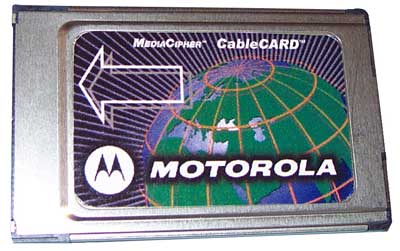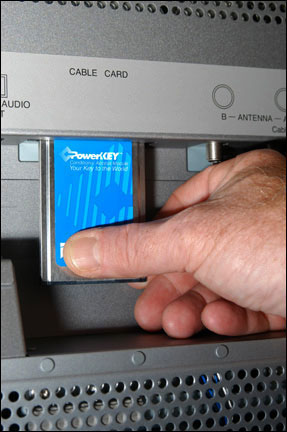Introduction
We know that you'd like nothing better than to get rid of that set-top box sitting on your DVD player. It's ugly, it's clunky, and it has its own remote. Extra cables snake about the back of your entertainment center, providing ideal conditions for some type of electrical fire, and the matte black box clashes with your brushed silver aesthetic. To top it all off, you have to pay for the privilege of using this thing—if you want digital cable, it's the only way to go.

This versatile black box adds a touch of elegance
to any home entertainment center
The collective groans of anguish from cable box users across the country have at last reached the ears of the cable industry, which has a (federally mandated) plan to ease your pain. It's called CableCARD, and it promises to do away with set-top boxes forever. And though CableCARD has tremendous promise, it is still a mysterious technology even to most of the technorati. If you're a regular Ars reader, you've probably heard the term, you know what it means, but you're the tiniest bit confused about exactly how it works, how you can get one, and exactly why you might want one.
That's why we've prepared this handy guide to CableCARD. Once you're done reading it, you will know more about CableCARDs than anyone in the country, save the engineers who developed them.* You will learn what to tell your Uncle Wilbur when he asks if his new TV really needs to have a CableCARD slot, you'll know what new hardware to buy if you want to use a CableCARD with Vista, and you'll learn why your mother was right when she told you that patience is a virtue.
* Gross hyperbole. Still, you'll know a lot.
How we got here
CableCARDs have an intriguing pedigree. They come not from the cable industry, but from Congress, which in 1996 passed the massive Telecommunications Act and charged the FCC with (among other things) creating a more competitive market for third-party set-top boxes (STBs). Specifically, section 304 of the law directed the Commission to:



